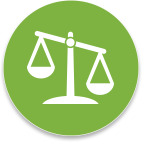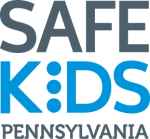Recalls
Recalls happen all the time, from food to children’s toys to cars. Recalls happen when the government and/or the product manufacturer take the product off the market because it could lead to serious harm. Typically, recalls request a return of the product for reimbursement, modification, or some other form of compensation. Many efforts are made to get the recalled products off the market and out of the stores, but they can still end up in second-hand stores, consignment sales, garage or yard sales, and other similar locations. People might not know that the product they are selling or giving to you is recalled, so it is important that you do your own research!
When buying something new, like a stroller or a car seat or some other children’s toy, it’s important to complete any registration card that comes along with a product. If you register your product, you will be notified if there is ever a recall.
If you have gotten a product second-hand, either as a gift or at a shop/sale, you will definitely want to do some research to make sure there hasn’t been any recall that could harm you or your family. Safe Kids is here to help with that.
Sign Up to Receive Recall Information by Email
Safe Kids Worldwide provides monthly emails with any child-related recalls from the major federal agencies (the Consumer Product Safety Commission, the Food and Drug Administration, and the National Highway Traffic Safety Administration). They will also email with any news and/or consumer concerns about children’s products. Sign up to receive the monthly emails at this link, or take a look at their list of recalls by year.
You can also subscribe to each government agencies’ recall list separately at their individual websites, or at recalls.gov.
New Product Buying Guidelines
- Do the research: We recommend looking at Consumer Reports for safety ratings and other reports before buying new products.
- Check for recalls: look up products you already have at home by product type or manufacturer to make sure they are still safe for use.
- Register the product: if your purchase comes with a registration form, fill it out on paper or electronically to receive any important updates from the manufacturer.
- It is particularly important to register your car seat! Find out how to do that at this link.
- Read the manual: before using new objects (or trying to put one together or install it properly), read the manual and then keep it in a safe location for future use.
Second-Hand Product Buying Guidelines
- Inspect a used product carefully. Make sure you cannot see any obvious breaks or fraying of fabrics, or other damage. Remember that just because it might look undamaged doesn’t mean it is.
- Verify the date that it was made, and ensure it complies with current federal regulations. For cribs, it must be made after June 2011; for strollers, after 2015.
- Check for recalls. Use the manufacturer name and/or product number to check for recalls on the product you’re considering buying.
- Check that it has no missing parts. You may need to have the product manual for this, or search for one online.
- Test it out. For a stroller: does the seat recline? Do the breaks work? Do the wheels lock or get stuck at all? For car seats: can it be correctly installed according to the manufacturer? Does it check out according to this Consumer Reports interactive decision tree? For any product, make sure you can test it within reason before you purchase it.
Items to Avoid Buying Second-Hand
Car seats
It is highly recommended for people not to purchase used car seats, for a few reasons:
- any potential recall status may be unknown,
- the car seat’s expiration date may have passed or may be close,
- if the car seat has been involved in a crash at all may be unknown.
According to experts, this information is important to know, and sets a high standard for secondhand purchases. If a car seat has expired, the plastic parts of it may be breaking down, making it unsafe to use but not readily obvious at first glance. If a car seat has been in a crash, then even if it looks undamaged, different components were probably stressed by the impact and it is no longer considered safe (i.e.: it did it’s job and protected the child by taking the impact stress on itself).
If you cannot afford a new car seat and finances are a barrier, look into car seat loaner programs through the PA Traffic Injury Prevention Project (PA TIPP). While the term “loaner” may be confusing, it doesn’t mean that it has been used. These programs are funded through the PA Department of Transportation and can provide car seats at low or no cost to qualifying individuals or families. We recommend you search by county and call the agency/agencies listed to schedule an appointment.
Cribs (and Other Baby Sleep Products)
New federal safety regulations were set for cribs in 2011. All cribs manufactured and sold (including resale) must comply with new and improved federal safety standards. The new rules, which apply to full-size and non-full-size cribs, prohibit the manufacture or sale of traditional drop-side rail cribs, strengthen crib slats and mattress supports, improve the quality of hardware and require more rigorous testing of products.
Additionally, used cribs could be weakened by previous use -like a toddler yanking on rails, jumping on the mattress, or other similar actions. Further, hardware or glue joints might be loosened because of changes in humidity or extreme temperatures (especially during storage) or other issues. Just like car seats, even if it looks undamaged, that doesn’t always mean it is.
Finally, although infant and child sleep seems completely disordered and you may be desperate for solutions to help your little one zonk out, remember that safe sleep is the best sleep. Inclined rockers or sleepers have been shown to be unsafe, as well as crib pads or bumpers or any other “sleep aid” for infants. Your baby should be put to sleep alone, on their back, with nothing else in their crib with them. If you choose to co-sleep, you can make your bed a safer environment by removing all pillows and blankets.
Strollers
In late 2015, new federal standards for car seats became mandatory, including covering proper harness placement and ensuring the integrity, stability, and strength of strollers, among other factors. Once again, like car seats and cribs, it might look undamaged but actually be quite unsafe for use.


